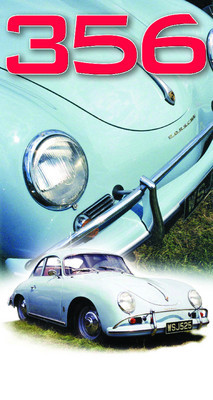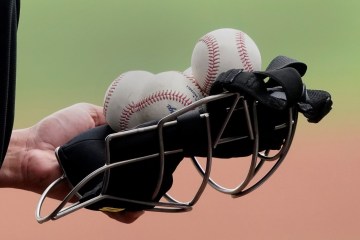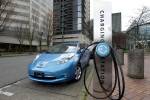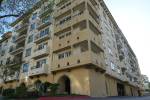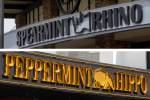First-ever Porsche is still desirable
Of all the successful sports cars ever created, the 356 is, hands down, the most unique, as well as one of the most desirable.
Strands of its DNA can still be found in today's Porsche 911-series that's nearly unbeatable in competition and remains atop the wish list of anyone who yearns for speed and beauty.
For automobile enthusiasts the world over, the Porsche name has remained magical for more than 50 years. And those master magicians, Dr. Ferdinand Porsche and his son Ferry, are revered for taking their underpowered and ill-handling 1930s-era Volkswagen Beetle and creating a veritable legend -- the Porsche 356.
What's in a name? In this case, 356 is a numerical call sign with no real significance (it just happened to be the 356th project undertaken by the father-and-son design team), but would eventually come to represent a quick, agile and solidly built performance car for the road or the race track.
It would also be the very first car to bear the Porsche family name.
The original prototype, constructed at Porsche's Austrian studio in 1947, was actually a midengined roadster. However, it was deemed too expensive an undertaking, so the test vehicles were fitted with a derivative of the Beetle's rear-engine platform, a four-wheel independent suspension and unit-body frameless construction, as well as the Volkswagen's air-cooled engine.
Over the next three years, the 356 would undergo significant refinement before making it to full production in 1950. During this period, Porsche was also receiving a royalty on every Volkswagen made, which provided necessary funds for research and development. Porsche was also able to relocate production to larger facilities near Stuttgart, in what was then West Germany.
Those early 356s were unusual looking to say the least. There wasn't a right angle in sight, just a round blob of a steel body that was derisively labeled "the bathtub." But that funny shape was not only aerodynamically superior to anything else on the road, but the curved sides resulted in an unusually roomy and comfortable cabin, with plenty of elbow room for both the driver and front passengers.
Under the rear hood resided the familiar Beetle-based air-cooled horizontally opposed four-cylinder engine. Porsche engineers had reduced its displacement to 1,086 cubic centimeters (1.1 liters) from the original 1,131 so it could compete in the 1,100-c.c. racing class. To compensate for the smaller size, a redesigned cylinder head gave an output of 40 horsepower (up from 25). Along with the 356's 84-miles-per-hour top speed, there was also plenty of stopping power, thanks to hydraulic drum brakes instead of the Beetle's cable-operated system.
The constantly evolving 356 continued until 1955. During that period, power and engine displacement steadily increased, eventually topping out at 70 horsepower and 1.5 liters, respectively. The car was a hit with customers and was equally successful on the race track. In 1951, for example, a specially prepared 356 won its class at France's grueling 24 Hours of LeMans endurance race.
The original 356 hardtops and convertibles were followed by the 356A in 1956. Along with minor body modifications, there was an all-new four-speed synchromesh transmission. You could even get a 110-horsepower DOHC racing engine.
As well, the 356A Speedster, a specially designed offshoot with its lowered windshield and more powerful engine, could be ordered for the street as well as well as the track. The Speedster is the most enduring of all the early 356s, with fiberglass replicas available to this day.
Following a four-year production run that led to more than 20,000 copies being built, the 356A was replaced by the 356B in 1960. The styling, although not nearly as round as it was with previous versions, still retained its jelly-mold appearance. The air-cooled four-cylinder engine produced from 60 horsepower in base trim, all the way up to 130 horsepower in the Carrera 2 racing model. The 356B and its successor, the disc-brake-equipped 356C, were far more powerful and more sophisticated than any previous Porsche, a fact that was reflected in the car's steadily increasing price tag. By this time, there was virtually nothing in common between the 356 and the VW Beetle, other than engine location.
Despite its $4,000-plus sticker price, the 356 continued to sell in record numbers. By 1963, yearly output exceeded 10,000 units for the first time in the company's history.
After a 15-year production run, the last of the more than 76,000 356s left the factory in September 1965. By then, Porsche was already producing its successor, the four-cylinder 912 and six-cylinder 911 models.
More than a half-century following their creation, mint-condition 356s are a rare find. That's because many of these cars continue to be treated as daily drivers by owners who enjoy their excellent road manners and the delightful mechanical sounds behind their ears.
For these folks, and for Porsche enthusiasts everywhere, the magic never stops.
Malcolm Gunn is a feature writer with Wheelbase Communications. He can be reached on the Web at www.wheelbase.ws/mailbag.html Wheelbase supplies automotive news and features to newspapers and Web sites across North America.



